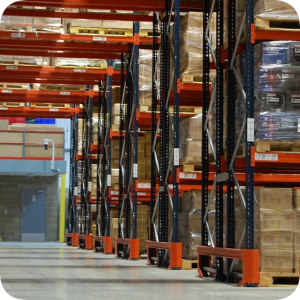 America’s biggest retailers have often embraced product returns as a key aspect of their business, starting with J.C. Penney and his namesake company in the early 20th century. Allowing customers to return any product with no questions asked, other big companies like Walmart and Amazon would go on to follow his example in the years to come. “It’s a hallmark of successful American retail,” said Dale Rogers, business professor at Arizona State University. “If you make it easy to shop, and you reduce the risk to the consumer, what you get is a lifetime consumer.” Of course, returns in the early days of brick-and-mortar retail weren’t too common: the average return rate at J.C. Penney’s 100 years ago was likely around 2 percent. In the years before online shopping, retailers saw the rate of returns rise to about 8 to 10 percent.
America’s biggest retailers have often embraced product returns as a key aspect of their business, starting with J.C. Penney and his namesake company in the early 20th century. Allowing customers to return any product with no questions asked, other big companies like Walmart and Amazon would go on to follow his example in the years to come. “It’s a hallmark of successful American retail,” said Dale Rogers, business professor at Arizona State University. “If you make it easy to shop, and you reduce the risk to the consumer, what you get is a lifetime consumer.” Of course, returns in the early days of brick-and-mortar retail weren’t too common: the average return rate at J.C. Penney’s 100 years ago was likely around 2 percent. In the years before online shopping, retailers saw the rate of returns rise to about 8 to 10 percent.
Returning products has become much more common in the age of e-commerce, with returns to online stores now averaging around 20 percent. That number can double for apparel as customers receive missized clothing or simply order multiple items with the intention to return most of them. Although many customers assume that their returned products are quickly added back to a retailer’s inventory, the reality is often not that simple. Amazon, for instance, rarely restocks returned items. According to Amazon executive Nikos Papaioannou, “if the seal has been broken, if the wrap is not intact, then it’s not going back to the shelf.” That means the e-commerce giant frequently finds itself with millions of unwanted products on its hands.
The value of this unsold merchandise is immense, approaching close to $1 trillion according to one estimate. In fact, items returned after the winter holidays are worth more than $300 billion, or 1.5 percent of U.S. GDP. With retailers like Amazon unwilling or unable to reshelve returned stock, resale firms like Liquidity Services are taking advantage of this multi billion dollar opportunity. The Maryland-based company maintains warehouses nationwide where it can assess pallets of returned stock bought from Amazon, Home Depot, Target, and other major retailers. “A lot of what we do involves receiving a truckload and then finding another buyer for that truckload, who then will distribute it to mom-and-pop stores and other resellers downstream,” said chief commercial officer John Daunt. Other firms like the Georgia-based ARC refurbish returned items while also providing retailers with data about potentially defective stock. Still, the sheer amount of returns produced by American retailers and consumers often means that products end up in landfills, as shown in this video we posted in November 2022.
Questions:
- Why do many major retailers make it easy for customers to return products?
- Do you think retailers should try to reduce the number of returned products by placing more restrictions on returns? Why or why not?
Source: David Owen, “What Happens to All the Stuff We Return?” The New Yorker, August 14, 2023. Photo by Mark Hunter.
